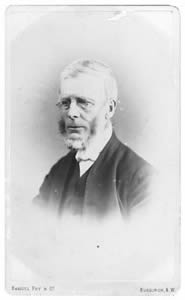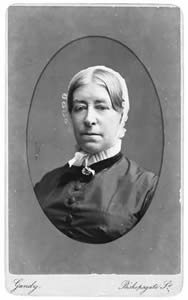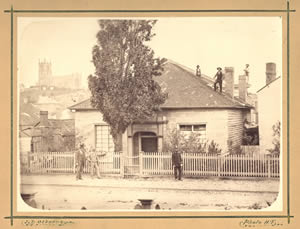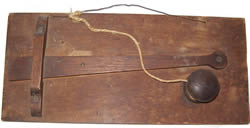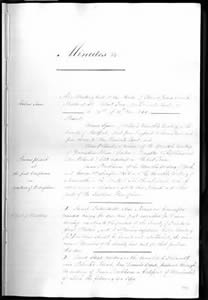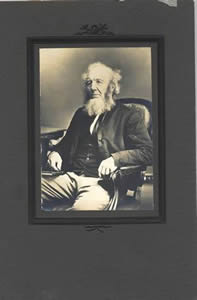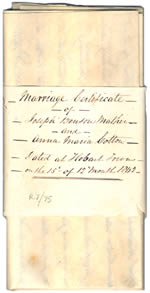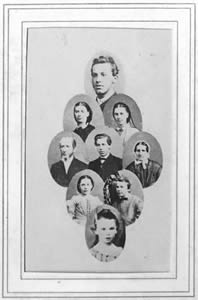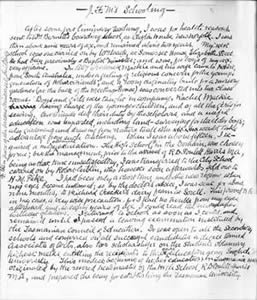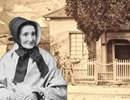 |
 |
|
In their travels around Van Diemen’s Land, Backhouse and Walker took lodgings where they could, whether in the modest houses of settlers or in the huts of herdsmen. They met quite a few people with Quaker connections and sympathies, and it was not long before there was the prospect of a viable group. The first Meeting in Australia was held in Hobart on 20 September 1833. The small community gained solidity with the accession of Robert Mather and Francis Cotton, two free settlers, and Henry Propsting, a former convict, along with their wives and families. In 1836 Backhouse purchased a weatherboard house in Murray Street to serve as the first Quaker Meeting House. After further travels through Australia and to South Africa, Backhouse decided to return to England in 1838. Walker resolved to remain. He had formed an understanding with Sarah Benson Mather, Robert Mather’s daughter. In 1840 he married her in the simple Quaker service in which the man and woman accepted each other as equals before God. His marriage to her was seen as ‘a providential opening for promoting the stability and encouragement of the little band [in Tasmania], who profess the simple and spiritual views of Christian doctrine as held by the Friends’. 17 Robert Mather, who had arrived in Hobart in 1821, had a land grant in Lauderdale, but returned to town in 1835. Originally a Wesleyan, he formally joined the Friends in 1834. Francis Cotton, who had come out in 1828 and acquired land at Kelvedon near Swansea, had belonged to the Quakers in England, but had been disowned for marrying out. Francis was readmitted in Tasmania, and his wife followed him in joining the Friends. 18 His house at Kelvedon was the second centre of Tasmanian Quakerism. Dr George Story (1800-85), District Assistant Surgeon at Swansea, was the most notable Quaker in the Kelvedon orbit. Marriages linked the Friends into an extended family. G. W. Walker was the son-in-law of Robert Mather, and brother-in-law of Joseph Benson Mather, who married Anna Maria, daughter of Francis Cotton. Their daughter, Esther Ann Mather, married Charles Henry Robey, forging a link with another prominent Quaker family. To outsiders, the Quakers set themselves apart by their quaint manner of speaking, saying ‘thou’, ‘thee’ and ‘thy’ rather than the plural form, using numbers rather than pagan names to designate the days of the week and the months of the year, and by their old-fashioned and home-spun style of dress. The requirement to marry within the group proved problematic in a small community. The Monthly Meetings in the 1840s and 1850s saw almost as many ‘disownments’, mainly for marrying out, as new recruits. Francis Cotton felt the discipline imposed on his son harsh: ‘it seems hard to be turned out for moral delinquency when he has at the mature age of 34-5 taken a pious young woman to wife, his own Society being unable to furnish him one’. 19 Thin on the ground, the Friends cultivated networks in Australia and throughout the English-speaking world. There was a surprising amount of travel between Britain and the Australian colonies, and between the colonies themselves. In the wake of Backhouse and Walker, there were other British Quakers who travelled ‘under concern’ to the Australian colonies, notably Daniel Wheeler in 1834 and Robert Lindsey and Frederick Mackie in 1852-5. William May (1816-1903), a visitor from South Australia, met and married Anna Maria, one of Francis Cotton’s daughters in 1856, and the couple settled in Tasmania in 1874. Lindsey and Mackie, who spent time in all the Australasian colonies, including New Zealand, made three visits to Van Diemen’s Land in 1852-3, 1853-4 and 1855. They both left accounts of their time on the island. They were welcomed into a small community, still largely limited to the original group of families. They stayed in Hobart with G. W. Walker and his family, and met his Mather in-laws. They made the long trek to see the Cottons in December 1852: the coach to Oatlands, next a spring cart for eleven miles; then, as the track was too rough for riding, a four mile hike with their luggage through a forest; bush hospitality from Joseph Storey, Dr Storey’s cousin; and finally a forty-mile ride ‘over high hills and through deep valleys’ to reach Kelvedon ‘by tea time, heated and fatigued’. They repeated the journey, this time approaching from Launceston and Campbelltown, in October 1854. 20 The colony itself still bore a heavy convict imprint. The Walkers and Mathers had convict servants. Walker told the depressing tale of a woman in their household who had attempted to murder a young man. Change was in the air: the last convicts arrived in 1853 and the colony achieved a degree of self-government in 1855. Nonetheless there were convicts with their ‘forbidding countenances’, party-coloured dress, and leg irons, to be seen everywhere. Lindsay and Mackie visited the Penitentiary in Hobart, the Female Factory in Cascades, and Port Arthur. On the Tasman Peninsula, with its 1600 convicts, Mackie reported being carried on the tramway pushed by four convicts: ‘It was a novel and somewhat uncomfortable feeling to have men for the propelling power; but we were more reconciled to it when we found it was allowable to give them a trifle for their labour’. 21 Over the course of three visits Mackie was able to follow some convict lives. During a walk before breakfast to take a view of Ferntree valley, he met two convicts with a constable. One of the convicts, whom he recognised as a man he had last seen in solitary confinement, was smiling broadly. Mackie wrote: ‘The bright sunny morning gladdened his heart, and it cheered me to see it. I now saw the chain gang coming slowly along the road to their daily work. I was glad to get into the bush and let it pass, the terrible clanking of their chains long continued’. He then struggled to express his feelings towards the whole system: ‘Many a sad and groaning heart must be here, but asked what else I would do with them, I could not tell. But I would encourage those who are brought in contact with them to persevere to bring softer humanizing influences to bear upon their better feelings, that with firmness kindness be united. The heart of the very worst is accessible, the witness for God is there …’ 22 Like Walker after Backhouse, Mackie stayed on and married in Australia after Lindsey returned to Britain. He had found his wife, Rachel Ann May, not in Tasmania but in South Australia. Frederick and Rachel Mackie, though, briefly ran a school in Hobart between 1856 and 1861.
|
|
||||
|
|||||
| © University of Tasmania ABN 30 764 374 782 CRICOS Provider Code 00586B | Copyright & Disclaimers | Accessibility | Site Feedback International Students | Future Students | Research | The Graduate School | Library Home |
